Beautiful views, the images that capture a city’s spirit, convey the emotion of nature or fill us with memories combining historic sites and our own happiness.
What we refer to as city “postcards” are an original part of the travel experience. The Venetian vedute began as a humble genre, characteristic of the painters that sold travellers the most significant vignettes of La Serenissima: the canals, the markets in the piazzas or St. Mark’s Basilica were masterfully depicted; the architectural details along with the everyday scenes portrayed in these cityscapes made the vedute a highly valued souvenir.
The masters of painting soon adopted this genre that entered the history of art as a tool for discovering customs, landscapes and relief.
The views in Compostela are one of the great memories that you will take away with you. A city of human proportions and divine spirit that will show you some of life’s scenery. Here are our five favourite ones. Of course, an image to be remembered can appear suddenly; you look out of your apartment window and there it is.
1 View from Monte do Gozo
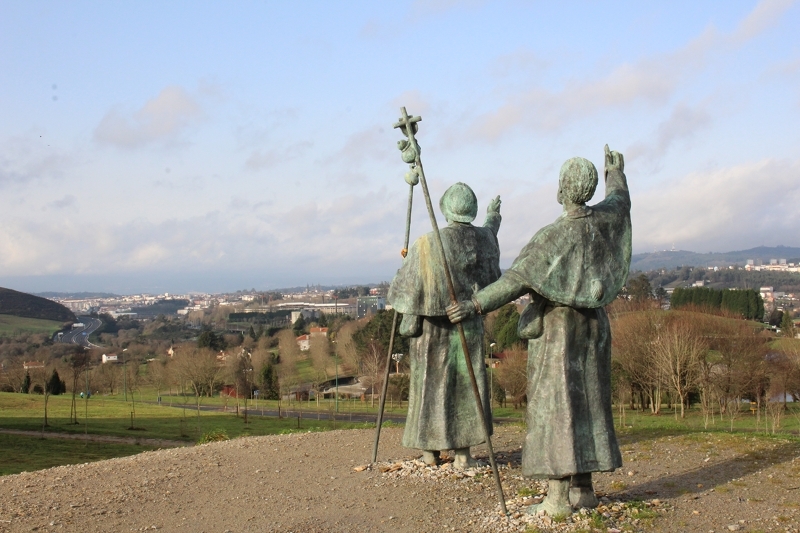
A panoramic view for history, a view etched in maps. The summit of Monte do Gozo was a viewpoint for pilgrims travelling to Compostela along the French Way. There is even a bronze statue of two pilgrims celebrating the fact that they will soon reach Santiago, which speaks to us of the view’s importance. However, today we might find it hard to relate to the jubilee that they must have felt on seeing the cathedral towers so close, after having experienced all the hardships we can imagine.
It is clear that the Way of St. James is no longer a calamitous experience, but the emotion behind this view remains.
2 View from Belvís
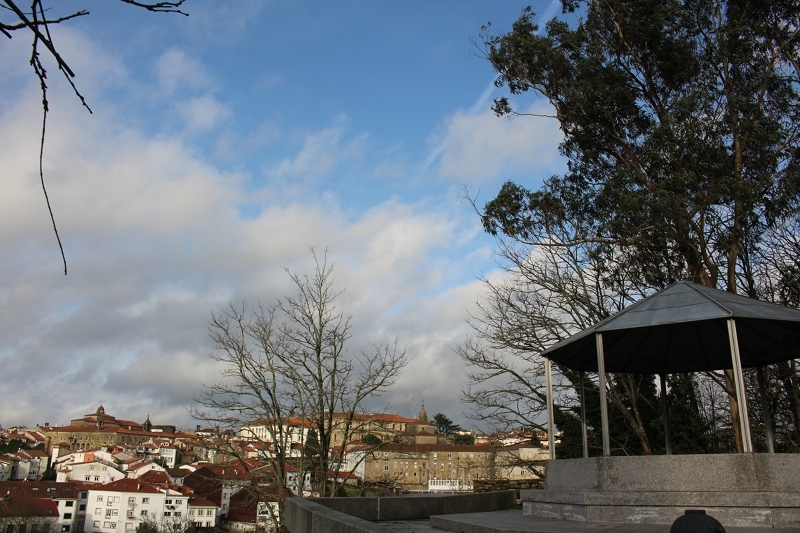
Place names serve as a guide to help us find out something more about the places we visit. Belvís may well be short for Bela Vista (beautiful view) and that is what it is: a view featuring a magical profile, always dominated by the cathedral towers, which takes away our breath under the light of luscofusco (dusk).
In the east of the city, on top of a gentle hill, we come across a nice cityscape of Compostela’s monumental district and new town. The gentle transition between both styles under the dim evening light is a view that is not to be missed. In addition to a park, there are viewpoints at both the Convent of the Order of St. Clare and the Minor Seminary: a small gem where we can enjoy the magic of Santiago without crowds.
3 View from the cathedral rooftops
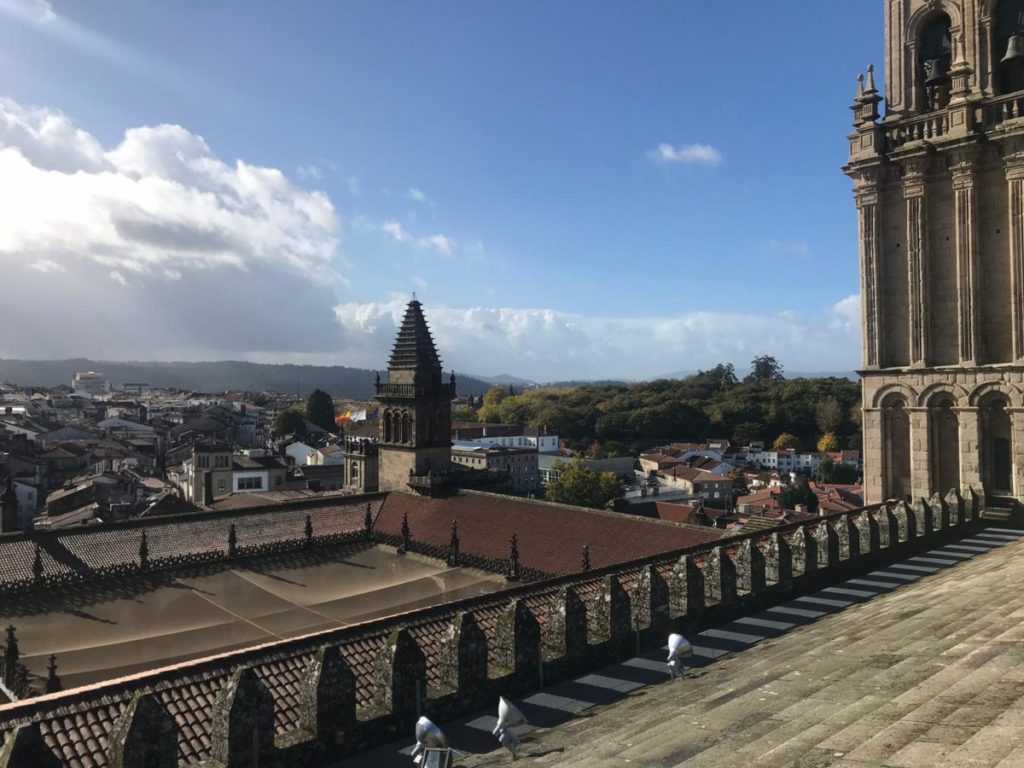
Although at the time of writing this post the restoration work is almost ending, visits to the cathedral rooftops are still restricted. This is the highest point of Santiago de Compostela and, naturally, we have a view of the city that cannot be seen anywhere else. A walk along the rooftops is part of the visit to the archbishop’s palace.
The guides explain how the cathedral was turned into a military fort after experiencing several popular uprisings. Not only do we enjoy Compostela’s watchtower; we also understand more about the history of the city, the relationship between the people and the church canons, and the importance of the building over and above its religious aspect.
4 View from Parque da Alameda
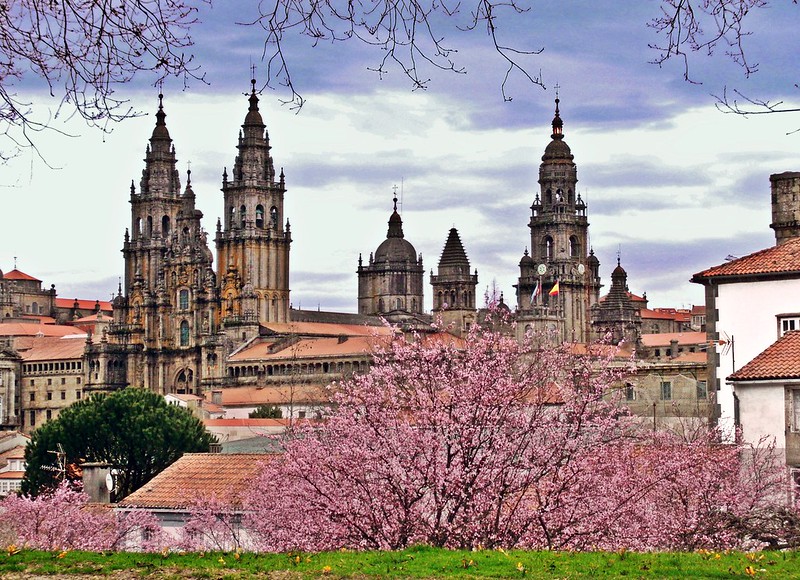
It might be Compostela’s best-known view, but that does not make it less impressive. Alameda Park, which is Compostela residents’ favourite green space, can be divided into three sections: Paseo de la Alameda (avenue), the “carballeira” (oak grove) of Santa Susana, where cattle markets used to be held, and Paseo da Ferradura or Paseo de los Leones (avenue). It is this last section that features a view of the Obradoiro façade that has almost become the cityscape par excellence. Hundreds of photos of weddings, christenings, first communions, visits by heads of state and even a statue of Valle-Inclán contemplating the view indicate that this is where Compostela’s real vedute is.
5 View of the Obradoiro façade from the Inferniño Apartamentos
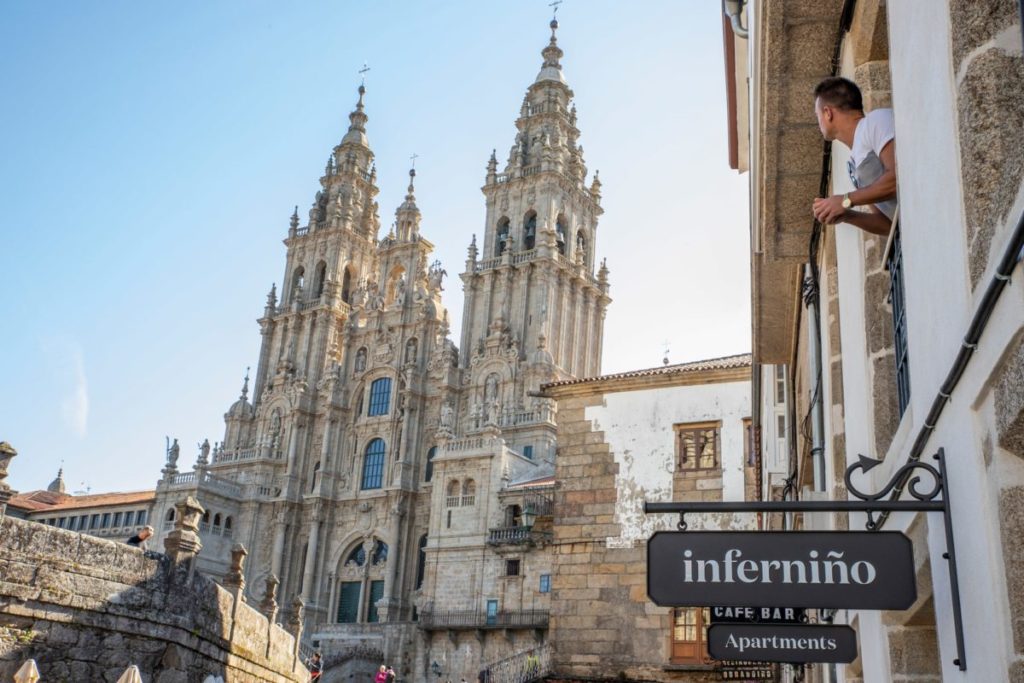
The last view, the unique picture, has an advantage: it is for your eyes only. Inferniño’s Apartament 5 features a surprise: almost no other hotel has this view, except the Hostal dos Reis Católicos’ Royal Suite, of the cathedral façade and square in front of it (Praza do Obradoiro).
The architect Casas Novoa’s work deserves an unhurried inspection because the baroque style, the city’s second main one, is above all surprise and interplay. Novoa made use of the declining medieval façade to present a project that plays with verticality and is full of small sculptural details making up a great narrative, before the eyes of all those that want to understand it.
From Apartment 5’s gallery we can see the central tower, crowned by a statue of the Apostle James dressed as a pilgrim. On both sides, the towers that we have seen and that dominate the city: at the top of the Bell Tower (“Torre de las Campanas”) and Carraca Tower (“Torre de la Carraca”) there is an X-shaped device made of wood and metal that, when it turns, makes a dull sound.
You can discover many mythical and real personages sculpted in this impressive façade, a narrative of the past that can be enjoyed from the tranquillity of Inferniño’s Apartment 5.

